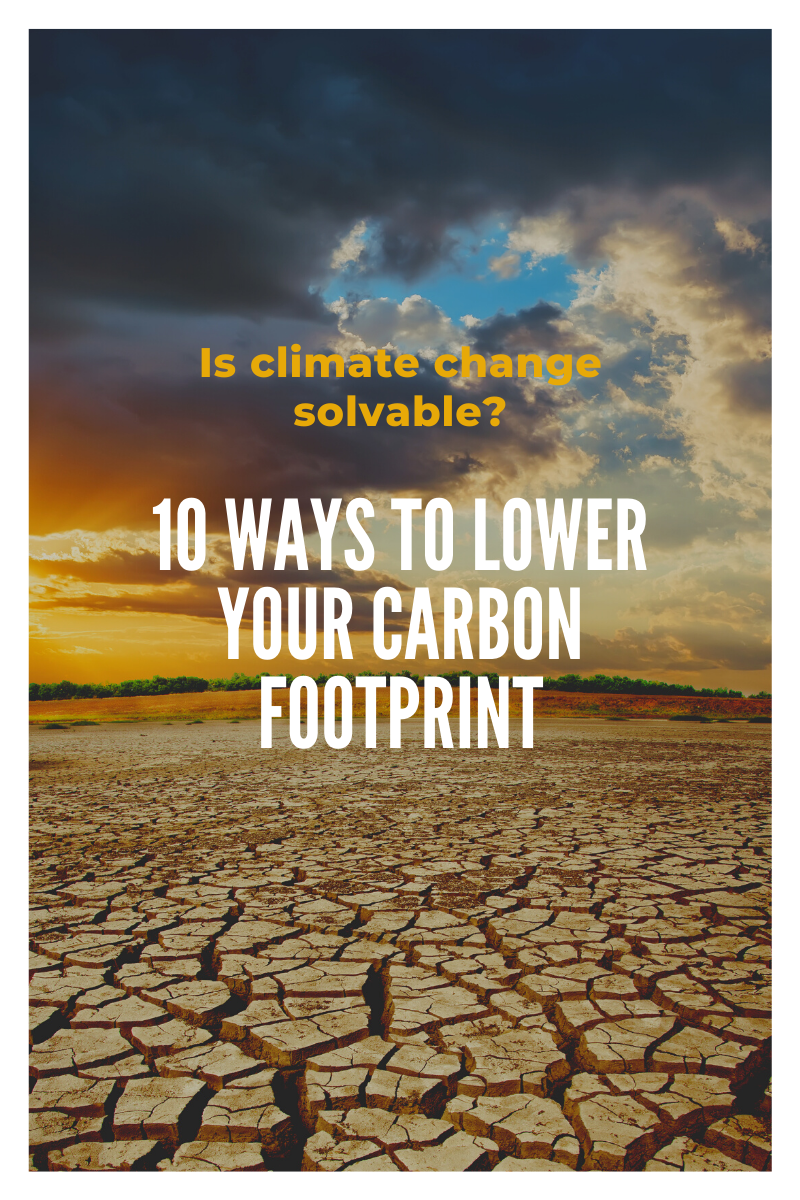Is climate change solvable?
How to lower your carbon footprint.
It’s no secret that caring about our planet does more than help our environment; it helps our wallets, our health, our food supply, our sanity! I could go on and on. Science consistently shows our choices are killing our planet, so climate change is real… but it’s not unsolvable.
So let’s focus on solutions!
Here are 10 realistic things you can do right now to lower your carbon footprint:
Growing a garden is not only beneficial for our body, it’s great for the environment. Replacing 20 percent of the food you buy with food you grow can reduce your carbon footprint by about 68 pounds of CO2 per year. But that number can fluctuate, depending on other things you’re doing around your garden. Things like mowing the lawn and using synthetic fertilizers and peat increases your garden carbon footprint so consider your resources with everything you do.
To put things in perspective… the average person exhales about 2 pounds of CO2 per day.
Composting your food and yard scraps stops it from going into the landfill. It’s also a great solution to the fertilizer issue because rather than the waste breaking down and producing the greenhouse gas methane, you are creating nutrient-rich soil.
Fun or not so fun fact: Greenhouse gas methane is thought to be more than 80 times more harmful than carbon dioxide.
- Plant a tree.
Trees absorb CO2, then release oxygen into the air. Just one mature tree can absorb 48 pounds of CO2 per year, while producing more than 250 pounds of oxygen each year. The average person needs about 1600 pounds per year to survive. So every tree counts.
Other bonuses of trees include providing shade, absorbing and retaining water and many trees actually have medicinal benefits.
- Eat less meat.
You don’t have to completely give up meat but moderation does wonders. For every day that you omit meat and dairy from your diet, you can reduce your carbon footprint by 8 pounds! Imagine if everyone committed to just two days per week of avoiding meat products; the results could be priceless!
When you’re buying new clothes, choose garments made from eco-friendly fabrics including organic cotton and hemp, and buy good quality so that it lasts. Another option is to shop re-sale stores.
Also don’t toss your old clothes, upcycle them, trade with friends, or even sale or donate them. Most anything is better than sending them to landfills.
- Wash your clothes in cold water.
You can save up to 500 pounds of carbon dioxide each year just by using cold water for two loads of laundry per week.
There’s only so much water… we can’t really make any more of it, not enough to sustain our lifestyle. So cherish it. That could mean taking shorter showers, turning the water off while brushing your teeth and only turning it on to rinse. Simply thinking of ways to conserve water.
Do you know how the water is cold when you first turn on the shower? How many of us are going to start the shower cold? But that’s a lot of water to waste. While I’m waiting for the water to heat up, I let the cold water run into a bucket to use later.
- Minimize your energy use.
Adjust your hot water heater. Turn it down to 120˚F. This can save about 500 pounds of CO2 a year.
Don’t forget the simple things like turning off lights and appliances when you’re not using them and switch to energy efficient light bulbs and of course limiting your time on the road. All of this will help save you money as well.
Another way we minimize our energy is by using the sun. It powers our offgrid container homes. We also use the sun to make our meals which is so awesome because nothing burns!
- Just say no.
Avoid single use plastics and paper products by saying “no thank you.” Take your own bags to the grocery store, and when you forget, simply ask for brown bags if it’s an option.
- Recycle and Reuse.
The goal is to keep products out of the landfill, so take care of your things so you can reuse and upcycle them. That includes things that may seem disposable. For example, when my kids were younger, I packed some of their lunch in sandwich bags. But the rule was to bring back all of their bags daily so we could wash them and reuse because realistically plastic isn’t going away, we use it too much in our society. But we can still be mindful.
So what’s your next step? Calculate your carbon footprint… that means summing up the emissions from everything you do — from what you eat, to how you get around, to what you buy… even how you wash your clothes.
It doesn’t have to be a strenuous process. There are tons of online carbon footprint calculators that make it easy.
So once you know how you are contributing to our carbon crisis, you can do something about it. Simply make small changes in your lifestyle so it doesn’t feel hard or feel like you’re making huge sacrifices. The little things count and they motivate all of us to do the bigger things. And if everything feels to big for you, try other alternatives like carbon offsetting… it’s a simple way for you to pay for your carbon footprint by supporting programs that can help reduce greenhouse gases.
Remember, the problems aren’t going away just because we want them to. Once carbon dioxide is added to the atmosphere, it’s in no hurry to leave. It stays around for a long time… anywhere from 100 to 1,000 years. So what we do today directly affects how we and our future generations live tomorrow.
The planet provides us with everything we need to survive. Let’s not take it for granted. Instead let’s strive for zero waste. Let’s make our planet a priority. Let’s encourage our engineers to design with the end in mind… mimic nature.





What a very informative article! Simply put and very effective suggestions for everyday people to be able to complete and remain consistent!